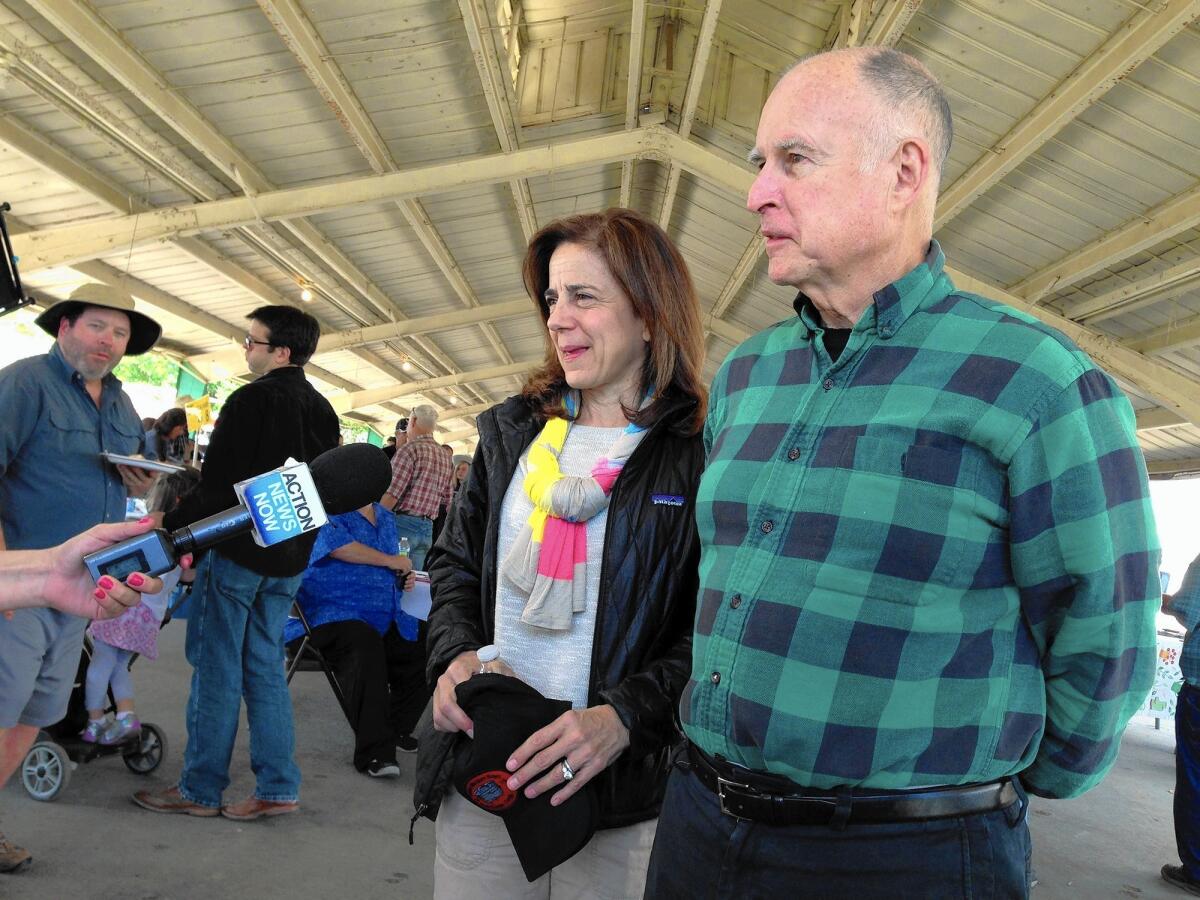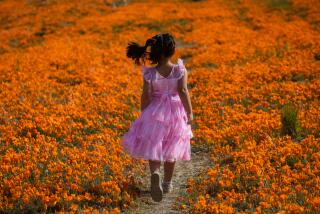Gov. Jerry Brown’s rural excursion underlines his support for farmers

Gov. Jerry Brown and his wife, Anne Gust, make the rounds at the western festival in Colusa, where they helped judge a cooking contest.
As California continues reeling from the drought, Gov. Jerry Brown on Saturday headed into the farmlands north of Sacramento, where concerns about the state’s parched spell are mounting after a dry winter.
The official reason for the governor’s trip was to help judge a cooking contest with his wife at a western festival. But it was also an opportunity for him to emphasize his support for farmers, who have faced increasing scrutiny for the amount of water they use.
“I talk to a lot of farmers. They’re under a lot of pressure,” Brown said. “It’s not just taking a quicker shower or flushing the toilet more than once. It’s maybe, they can’t pay their bank loan or something really serious like that.”
California’s drought has entered its fourth year with no end in sight, and Brown recently ordered a 25% reduction of water use in urban areas.
The restrictions do not apply to agriculture, which uses four times as much water as the cities. However, many farmers are receiving less water from the state’s massive irrigation works, forcing them to dig deeper wells or fallow hundreds of thousands of acres of land.
Brown contrasted the use of water in cities with that of rural areas.
“It is different than watering an ornamental plant and growing broccoli or lettuce or walnuts or almonds,” he said.
Roy Ellis of Placer County said California’s urban dwellers don’t appreciate how much water it takes to grow the food they enjoy.
“If they don’t understand, let them come out and spend a day with a farmer,” he said.
Brown grew up in San Francisco and now lives in Oakland and Sacramento, but his family has a ranch in nearby Williams that he regularly visits. He held one of his only campaign events before last year’s election in the tiny town.
“It’s a completely different world than Sacramento,” Brown said.
The governor seemed to relish his time at the festival. He posed for photos with children, Miss Colusa County and a horse. He helped raffle off a barbecue grill by pulling a ticket out of a pail.
For the cooking contest, he and his wife tasted dish after dish of hearty food like ribs and cornbread cooked in Dutch ovens.
“That was breakfast and lunch,” he said afterward.
Brown was warmly welcomed by local residents and farmers, including some Republicans who crossed party lines to vote for the Democrat.
Donald Bransford, a Colusa farmer whom the governor reappointed to the state agriculture board, thanked him for defending growers.
“He realized the cuts that have already happened in agriculture,” Bransford said.
The drought is expected to be less threatening to Colusa County than to farming areas farther south, thanks to the nearby Sacramento River and senior rights to its water.
“They’re likely to weather this storm better,” said Jeff Mount, a senior fellow at the Public Policy Institute of California.
But there’s still pervasive concern about how the drought will affect the area’s rice crops, nut trees and cattle ranches.
Paul Sankey of Colusa hasn’t yet planted his 250 acres of land with rice this year, and his car dealership could also take a hit from the drought.
“The farmers are 80% of our business, and they’re afraid to spend any money,” he said.
In addition, runoff from the Sierra Nevada, which normally provides a third of the state’s water, will be minimal because there is little snow.
“Everybody was praying for rain,” said Vince Fletcher, who works on a nearby cattle ranch. “We forgot to pray for snowpack.”
A number of farmers said they hoped the state would build a new reservoir nearby with money from the $7.5-billion water bond that voters approved last year. Brown said he wasn’t ready to commit to any plan.
“We’re going to do some kind of storage,” the governor said. “But I’m not saying what it is yet.”
Twitter: @chrismegerian
More to Read
Start your day right
Sign up for Essential California for news, features and recommendations from the L.A. Times and beyond in your inbox six days a week.
You may occasionally receive promotional content from the Los Angeles Times.







